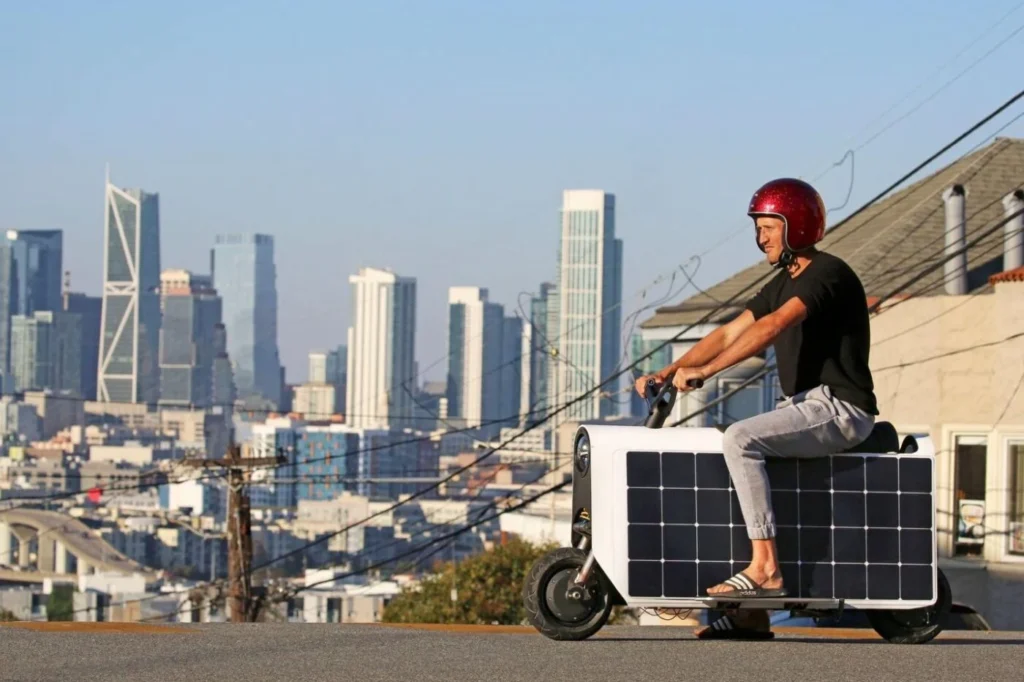
Although bizarrely unfamiliar, this looks familiar.
Otherlab, a San Francisco startup, just announced a $5,000 solar-powered scooter called the Lightfoot.
Twin solar panels you straddle like a horse saddle promise up to 20 extra miles of range per day of sun exposure.
Just park that baby outside (if you dare), wait for the sun to do its thing — and ride off into the sunset at a blazing 20mph (32 km/h).
It reminds me of something I talk about in I Need That.
Twenty years ago, Segway also promised to revolutionize personal transportation.
Despite support from Jeff Bezos and Steve Jobs, plus $100 million in development costs, they sold just 23,500 units in their first seven years. A far cry from the millions of Segways a year they’d projected.
The Lightfoot faces eerily similar challenges:
Price barrier: At US $5,000, it costs more than many used cars — kinda like Segway’s pricing problem.
Practical limitations:
- Must park outside (in full sun) for solar charging
- Weather dependent range
- Limited cargo space (33 pounds)
- Two-person seating but solar panels between riders
Social acceptance: Like Segway, the Lightfoot solves a problem few people have, while creating new ones (where do you park a $5,000 ridable solar thingy in the city?).
And yes… you’re literally straddling solar panels in public. It looks ridiculous.
For context: The company’s founder, Australian engineer Saul Griffith, has built a team across the U.S., Australia, and Taiwan. They’re promoting the Lightfoot as “zero emissions” transportation — but that’s only true if you can leave it outside for enough hours and use it sparingly.
The future may hold solar-powered personal transportation, somehow.
I hope so.
But as Segway learned, technical innovation alone doesn’t create need.
Price must align with value. And looking like a tech nerd’s science project rarely helps adoption.
What do you think — would YOU ride one? (Hey, they deliver in January!) Hit reply and let me know.
Action for you: Before pursuing technical innovation, validate these three elements:
- Would most target buyers feel comfortable being seen using this?
- Does the price align with the pain felt from the problem being solved?
- Are the practical limitations acceptable for daily use?
Laurier
P.S. Otherlab’s “ironclad” three-month buyback guarantee suggests they understand the adoption challenges. For comparison, Segway offered city tours to create exposure. Both feel like band-aids on deeper market fit issues.
